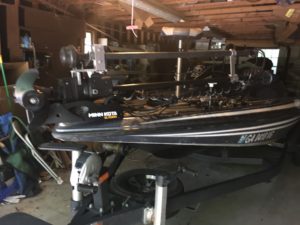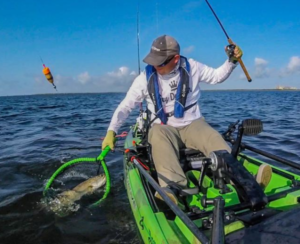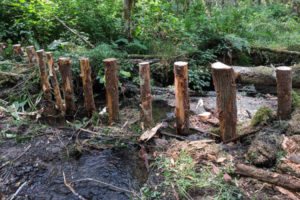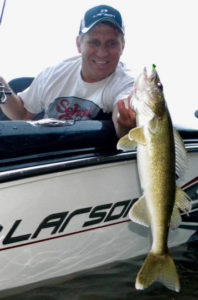Yakima Basics on Fishing PowerBait For Trout
by Buzz Ramsey, Yakima Bait Company
from The Fishing Wire

Catch trout on Powerbait
“Still-Fishing” (also known as dead-sticking or plunking) dough bait for trout is a popular and productive method for catching trout from lakes, reservoirs and rivers, many of which are frequently stocked with hatchery trout. It’s so Easy:Cast out, allow your outfit to sink to the bottom, wait for a bite, and set-the-hook when your rod tip dips toward the water. It’s important to leave some slack in your line, so trout can swim off with your bait and swallow it without feeling line resistance before you yank back on your rod tip to set the hook.
When using PowerBait you can greatly increase your success by using the right amount of dough trout bait in combination with a Lil’ Corky single-egg-imitation so that your bait will float above bottom to allow cruising trout to find it. This is fundamental to success and often results in quick limits. The buoyancy of your Lil Corky single-egg-imitation will take the guess work out of how much dough bait is the right amount to float your bait.
When rigging a Lil’ Corky/PowerBait combination, use a ball of PowerBait slightly larger than your Lil’ Corky. We can tell you, based on extensive testing and observation of underwater video footage, that you will catch far more fish if your Lil’ Corky and PowerBait combination floats side-by-side in the water column.
Selecting the Right Leader Length:
Leader length is important because, after all, you want your bait floating at the depth the fish are cruising, which might be close to the bottom during times when the water is clear and sun bright, higher in the water column during the spring – when water temperatures begin to warm – early and/or late in the day, or on overcast days. And while the average leader length should be 18-to-24 inches, a leader long enough to extend above bottom-growing vegetation might be the ticket to success when trout are swimming just above the weed tops.
Rigging is Easy:
Simply thread your main line through the hole in an oval egg sinker, add a small plastic bead, and tie your line end to a size ten (10) barrel swivel. Then attach your leader (18-to-24 inches), complete with Lil’ Corky threaded on the leader above hook, to the free end of your swivel end, then mold a ball of PowerBait around your hook.
Note: A size 12 treble hook should be used in combination with a size 12 Lil Corky, and size 14 treble with size 14 Lil Corky bait floater if you intend to keep the fish–if you’re release fishing, avoid trebles and go with a larger single hook, maybe size 10.
Terminal Tackle You Will Need:
1) Selection of size 12 and 14 Lil’ Corky floating egg imitation/bait-floaters; the most popular colors are pink pearl, red, orange, pink, sherbet, clown, and (for night fishing – where legal) luminous flame.
2) Selection of size 12 and 14 treble hooks.
3) Selection of ¼, 3/8 and 1/2 ounce “Oval Egg” free-sliding sinkers.
4) Size 10 barrel swivels.
5) Size 4 and/or 6mm plastic beads
6) Spool of four (4) or six (6) pound test monofilament or fluorocarbon leader material. Fluorocarbon leader material is less visible to fish.
Prepared Bait
The most popular and productive dough trout bait is Berkley PowerBait with the garlic flavors preferred by many anglers. The most popular dough bait colors include Rainbow, Sherbet, Chartreuse, Peach, and Flame Orange.
Rods, Reels and Fishing Line
Anglers specializing in still-fishing PowerBait employ 6 to 7 foot soft-tipped spinning rods rated for 2-to-8 pound test fishing line. Your spinning reel should be one with a quality drag, like an Abu Garcia or Pflueger brand. Purchasing a rod and reel combination, like one offered by Shakespeare and sized for trout, can represent an affordable option. The most popular fishing line is six (6) pound test monofilament.
For more details, visit www.yakimabait.com.




